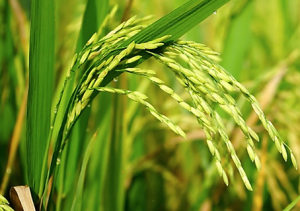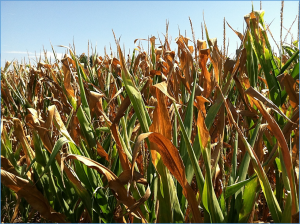Strigolactones (SLs) are a new class of plant hormones that play a significant role in regulating various aspects of plant growth promotion, stress tolerance and influence the rhizospheric microbiome. GR24 is a synthetic SL analog used in scientific research to understand the effects of SL on plants and to act as a plant growth promoter. This study aimed to conduct hormonal seed priming at different concentrations of GR24 (0.1, 0.5, 1.0, 5.0 and 10.0 µM with and without arbuscular mycorrhizal fungi (AMF)
Climate change and cadmium (Cd) contamination pose severe threats to rice production and food security. Biochar (BC) has emerged as a promising soil amendment for mitigating these challenges. To investigate the BC effects on paddy soil upon GHG emissions, Cd bioavailability, and its accumulation, a meta-analysis of published data from 2000 to 2023 was performed. Data Manager 5.3 and GetData plot Digitizer software were used to obtain and process the data for selected parameters.
High temperatures are increasingly becoming a prominent environmental factor accelerating the adverse influence on the growth and development of maize (Zea mays L.). Therefore, it is critical to identify the key genes and pathways related to heat stress (HS) tolerance in maize. Great challenges have been faced in dissecting genetic mechanisms and uncovering master genes for HS tolerance.
Climate change has a significant impact on rice grain appearance quality; in particular, high temperatures during the grain filling period increase the rate of chalky immature grains, reducing the marketability of rice. Heat-tolerant cultivars have been bred and released to reduce the rate of chalky grain and improve rice quality under high temperatures, but the ability of these cultivars to actually reduce chalky grain content has never been demonstrated due to the lack of integrated datasets
Grapevine (Vitis vinifera L.) is an economically important fruit crop cultivated worldwide. In China, grapevine cultivation is very extensive, and a few Vitis grapes have excellent pathogen and stress resistance, but the molecular mechanisms underlying the grapevine response to stress remain unclear. In this study, a microRNA (miRNA; miR827a), which negatively regulates its target gene VqMYB14, a key regulatory role in the synthesis of stilbenes, was identified in Vitis quinquangularis (V. quinquangularis) using transcriptome sequencing
Organic carbon availability in soil is crucial for shaping microbial communities, yet, uncertainties persist concerning microbial adaptations to carbon levels and the ensuing ecological and evolutionary consequences. We investigated organic carbon metabolism, antibiotic resistance, and virus–host interactions in soils subjected to 40 y of chemical and organic fertilization that led to contrasting carbon availability: carbon-poor and carbon-rich soils, respectively
CRISPR/Cas13 systems are programmable tools for manipulating RNAs and are used in a variety of RNA-targeting applications. Within the Cas13 family, Cas13d is the most active subtype in mammalian cells. Recently, Cas13d was harnessed as an antiviral against diverse human RNA viruses. However, Cas13d is barely active in the cytosol of mammalian cells, restricting its activity to the nucleus, which limits applications such as programmable antivirals.
Cultivating rice varieties with robust blast resistance is the most effective and economical way to manage the rice blast disease. However, rice blast disease comprises leaf and panicle blast, which are different in terms of resistance mechanisms. While many blast resistant rice cultivars were bred using genes conferring resistance to only leaf or panicle blast, mining durable and effective quantitative trait loci (QTLs) for both panicle and leaf blast resistance is of paramount importance.
Coffea arabica, an allotetraploid hybrid of Coffea eugenioides and Coffea canephora, is the source of approximately 60% of coffee products worldwide, and its cultivated accessions have undergone several population bottlenecks. We present chromosome-level assemblies of a di-haploid C. arabica accession and modern representatives of its diploid progenitors, C. eugenioides and C. canephora. The three species exhibit largely conserved genome structures between diploid parents and descendant subgenomes, with no obvious global subgenome dominance.
Adenosine 3′,5′-cyclic monophosphate (cAMP) is a universal signaling molecule that acts as a second messenger in various organisms. It is well established that cAMP plays essential roles across the tree of life, although the function of cAMP in land plants has long been debated. We previously identified the enzyme with both adenylyl cyclase (AC) and cAMP phosphodiesterase (PDE) activity as the cAMP-synthesis/hydrolysis enzyme COMBINED AC with PDE (CAPE) in the liverwort Marchantia polymorpha.


 Curently online :
Curently online :
 Total visitors :
Total visitors :









